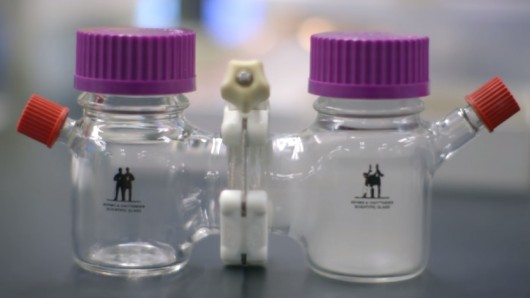
Material scientists at Stanford University have developed a highly effective semitransparent air filter that can collect 99 percent of the very small PM2.5 particles, considered the most harmful to the human respiratory tract. The low-cost filters, which don’t require power to function, could be used to build better protective facemasks, window screens, filtration systems in hospitals, and perhaps even to reduce pollution from cars and industrial smoke stacks.
The pollution in Beijing and other highly industrialized areas is reaching worrying levels, leading architects and city planners to formulate new ways (some more viable than others) to deal with the problem.
That's why associate professor of material science and engineering Yi Cui and his group have developed the filter, using a nanofiber material commonly used in surgical gloves.
The members of Cui’s group focus mainly on battery technology, so they are able to tackle new issues (such as building highly effective water filters) with a fresh perspective that breaks away from previous solutions. As a case in point, for their air filter they opted to use the unlikely candidate polyacrylonitrile (PAN), a material commonly used to make surgical gloves. The scientists found that PAN has a strong attraction to smog particles and particularly to those smaller than 2.5 microns (known as PM2.5), which are thought to pose the greatest risk to human health.
The scientists spun liquid PAN into a very dense web of nanoscopic fibers. Thanks to the combined strength and molecular attraction of the material to the pollution particles, the fiber can collect small, harmful dusts and keep accumulating them until they reach about 10 times the weight of the fibers themselves.
A field test in Beijing confirmed that the material can collect 99 percent of the particles while still maintaining 70 percent transparency. Cui and team said that in its current form, this low-cost filter will last around one week, depending of course on the specific application.
"The transparency and distance between the fibers means that light and air can pass through very efficiently, which makes it a very good application for windows," says Cui. "It might be the first time in years that people in Beijing can open their window and let in a fresh breeze."

 Previous page
Previous page Back to top
Back to top







